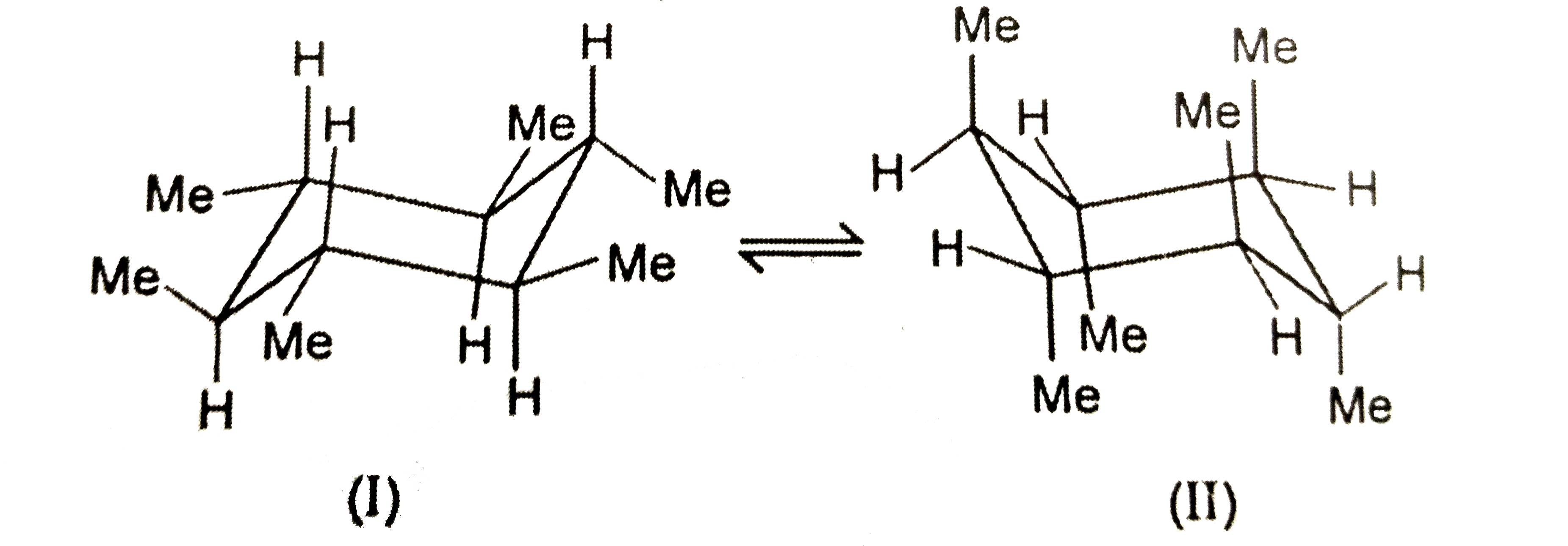Why is 1∘ carbanion more stable than a 2 carbanion ?
To understand why a primary carbanion is more stable than a secondary carbanion, we need to analyze the structures and the effects of substituents on the stability of these carbanions.
1. Define Carbanions:
- A carbanion is a negatively charged carbon species. The stability of carbanions depends on the ability of the surrounding groups to stabilize the negative charge.
2. Identify the Structures:
- Primary Carbanion: An example is CH−2CH3. Here, the negatively charged carbon is bonded to one alkyl group (methyl).
- Secondary Carbanion: An example is CH3CH−CH3. Here, the negatively charged carbon is bonded to two alkyl groups (two methyl groups).
3. Consider the Inductive Effect:
- Alkyl groups can donate electron density to the carbanion through the +I (inductive) effect. This effect stabilizes the carbanion by dispersing the negative charge.
- In the primary carbanion, there is only one methyl group donating electron density to the negatively charged carbon.
- In the secondary carbanion, there are two methyl groups donating electron density to the negatively charged carbon.
4. Analyze the Stability:
- Although the secondary carbanion has more alkyl groups (two methyl groups), it also has a greater electron density due to the contributions from both methyl groups. This increased electron density makes the carbanion less stable because the carbon atom is already negatively charged and cannot accommodate more electron density effectively.
- In contrast, the primary carbanion, with only one methyl group, has less electron density and is therefore more stable.
5. Conclusion:
- The primary carbanion is more stable than the secondary carbanion because the negative charge on the primary carbanion is less destabilized by the inductive effect of the single methyl group compared to the secondary carbanion, which experiences destabilization from two methyl groups.
Summary:
- Primary Carbanion: More stable due to less electron density from one methyl group.
- Secondary Carbanion: Less stable due to increased electron density from two methyl groups.
- A carbanion is a negatively charged carbon species. The stability of carbanions depends on the ability of the surrounding groups to stabilize the negative charge.
- Primary Carbanion: An example is CH−2CH3. Here, the negatively charged carbon is bonded to one alkyl group (methyl).
- Secondary Carbanion: An example is CH3CH−CH3. Here, the negatively charged carbon is bonded to two alkyl groups (two methyl groups).
- Alkyl groups can donate electron density to the carbanion through the +I (inductive) effect. This effect stabilizes the carbanion by dispersing the negative charge.
- In the primary carbanion, there is only one methyl group donating electron density to the negatively charged carbon.
- In the secondary carbanion, there are two methyl groups donating electron density to the negatively charged carbon.
- Although the secondary carbanion has more alkyl groups (two methyl groups), it also has a greater electron density due to the contributions from both methyl groups. This increased electron density makes the carbanion less stable because the carbon atom is already negatively charged and cannot accommodate more electron density effectively.
- In contrast, the primary carbanion, with only one methyl group, has less electron density and is therefore more stable.
- The primary carbanion is more stable than the secondary carbanion because the negative charge on the primary carbanion is less destabilized by the inductive effect of the single methyl group compared to the secondary carbanion, which experiences destabilization from two methyl groups.
- Primary Carbanion: More stable due to less electron density from one methyl group.
- Secondary Carbanion: Less stable due to increased electron density from two methyl groups.
Topper's Solved these Questions
- ORGANIC CHEMISTRY : SOME BASIC PRINCIPLES AND TECHNIQUES BOOK - ICSECHAPTER - ORGANIC CHEMISTRY : SOME BASIC PRINCIPLES AND TECHNIQUES EXERCISE - ESSAY ( LONG ANSWER ) TYPE QUESTIONS
42 Videos
- ORGANIC CHEMISTRY : SOME BASIC PRINCIPLES AND TECHNIQUES BOOK - ICSECHAPTER - ORGANIC CHEMISTRY : SOME BASIC PRINCIPLES AND TECHNIQUES EXERCISE - OBJECTIVE ( MULTIPLE CHOICE ) TYPE QUESTIONS
142 Videos
- ORGANIC CHEMISTRY : SOME BASIC PRINCIPLES AND TECHNIQUES BOOK - ICSECHAPTER - ORGANIC CHEMISTRY : SOME BASIC PRINCIPLES AND TECHNIQUES EXERCISE - VERY SHORT ANSWER TYPE QUESTIONS
87 Videos
- HYDROGENBOOK - ICSECHAPTER - HYDROGENEXERCISE - NCERT TEXT-BOOK EXERCISE (With Hints and Solutions)
53 Videos
- REDOX REACTIONS (OXIDATION AND REDUCTION)BOOK - ICSECHAPTER - REDOX REACTIONS (OXIDATION AND REDUCTION)EXERCISE - NCERT TEXT-BOOK. EXERCISES ((With Hints and Solutions)
69 Videos
Similar Questions
What are carbanions ? Discuss their orbital structure and explain the cause of their reactivity. Why is ethyl carbanion more reactive than methyl carbanion ?
View SolutionStatement-1: Bridge head carbocation is less stable than Bridge head carbanion.
and
Statement-2: C atom in carbocation is sp2 generally hybridized.
View Solution
Knowledge Check
Which of the following orders correctly depicts the decreasing order of stability of carbanion?
A BOHC−¯¯¯C∣CHO−CHO>OHC−¯¯¯CH−CHO>H3C−C∣∣O−¯¯¯CH−C∣∣O−CH3>¯¯¯CH3−CHOC¯¯¯CH2NO2<¯¯¯CH2CN<¯¯¯CH2Cl<¯¯¯CH2CH3D
BOHC−¯¯¯C∣CHO−CHO>OHC−¯¯¯CH−CHO>H3C−C∣∣O−¯¯¯CH−C∣∣O−CH3>¯¯¯CH3−CHOC¯¯¯CH2NO2<¯¯¯CH2CN<¯¯¯CH2Cl<¯¯¯CH2CH3D
Why is Pt(IV) more stable than Ni(IV).
View SolutionStatement -1 In phenylbenzoate Frie's rearrangements is faster than ethylbenzoate
Statement -2 Phenyl acylium cation is more stable than ethylacylium cation.
View SolutionThe carbanion which is most stable is
View SolutionAn organic reaction occurs by using reagents called electrophiles and nucleophiles via the formation of some reactive intermediates called carbocations, carbanions, free radicals, carbenes, nitrenes, radical cations, and radical anions.
The most stable carbanion is :
View SolutionWhy is europium (II) more stable than cerium (II) ?
View SolutionWhat is the state of hybridisation of the central carbon in a carbanion ?
View SolutionWhich one is more stable and why?

View Solution
